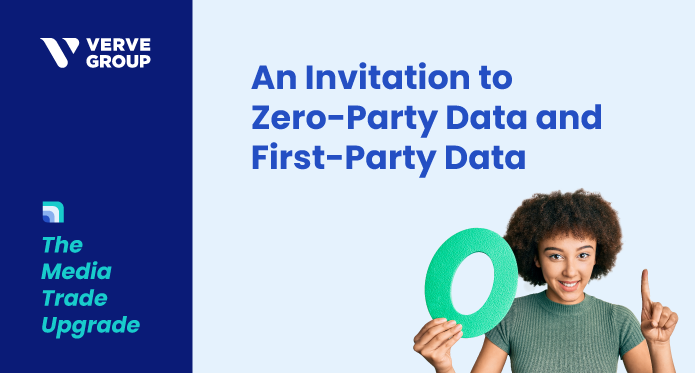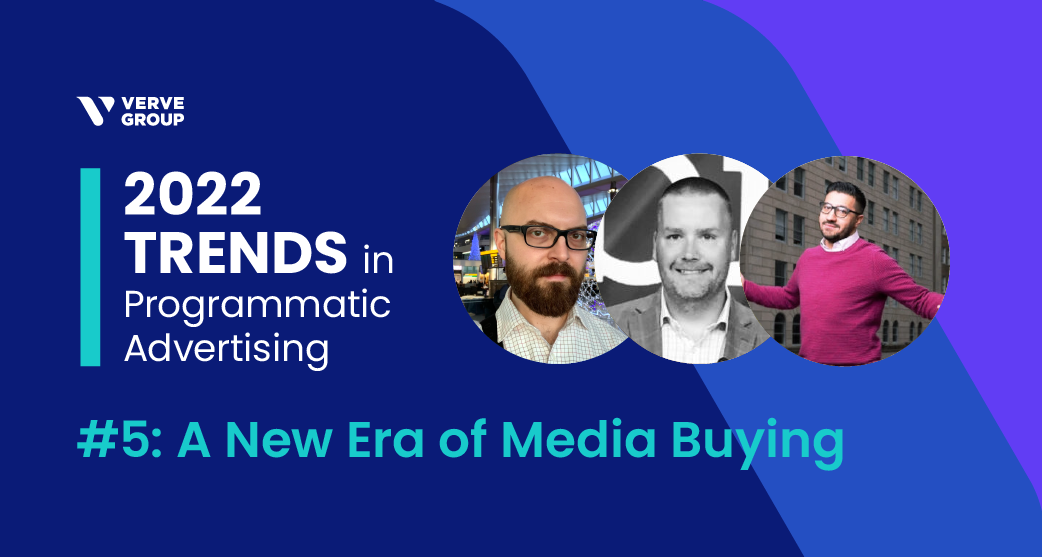‘Tis the season: Curated deals for year-end campaigns

As the weather cools in Q4, pressure heats up for programmatic media traders to run flawless campaigns, beat KPI targets, manage strict budgets, and handle high-pressure QBRs. Consider this blog our gift to you: a survival guide to year-end programmatic media trading.
The Media Trade Upgrade: An invitation to zero-party data and first-party data

Welcome to the third edition of The Media Trade Upgrade, where programmatic traders can get essential info to stay ahead in ad tech – all in quick, bite-sized pieces. Consider today’s blog post your invitation to an exciting party . . . of zero-party and first-party data. We’ll quickly recap differences of the different types of data, all the way from the definition of zero-party to third-party data. (Don’t worry – there’s no such thing as fourth-party data . . . yet!) Then, we’ll dig into how programmatic media traders can use zero-party data alongside first-party data for media planning that crushes campaign goals. Countdown: From third-party to zero-party Triple Threat: Third-party data Third-party data describes how an entity without a direct relationship with the end-user collects that user’s data. Aggregators can obtain data from multiple sources to offer a broad view of users when combined with third-party inputs. This data can be stitched together across various inputs to help create a broader picture of a user. Third-party data works alongside first-party data to improve targeting lists. Determining if third-party data was legally collected is challenging with changing privacy regulations and user data control. Bridging the Gap: Second-party data Second-party data occurs when one entity shares data about its users with a trusted partner. The data quality and accuracy is high, since it was originally one company’s first-party data. Second-party data is also available for purchase on certain data marketplaces. Publishers may also sell information to marketers, such as an ecommerce platform selling purchase history or customer loyalty data to an advertiser. The Gold Standard: First-party data First-party data is information collected from a company’s customers or audience, such as profile information, website purchases, or loyalty programs. This type of data is given freely and verified for accuracy, making it highly valuable. Take a user who creates an account to access free content on a news site. Any personal information they provide directly to the publisher, such as their email, gender, or birth date, counts as first-party data. Similarly, purchase history is another key example of first-party data. Fast fact: 78% of businesses consider first-party data as the most valuable source of data for delivering personalization to audiences. The Unsung Hero: Zero-party data Zero-party data refers to information that users proactively and willingly share with brands and advertisers, typically through direct engagement such as surveys, polls, or preference centers. Unlike first-party data, which is collected through user interactions with a brand’s website or app, zero-party data is explicitly provided by the user, giving them even more control over their personal information. Benefits of zero-party data in advertising and media planning The impact of zero-party data on campaign planning is significant for several reasons: Better user experience Zero-party data often includes valuable insights into a user’s preferences, needs, and interests. This information allows advertisers to create more targeted and personalized campaigns, leading to increased engagement and conversion rates. In 2022, 62% of consumers said a brand would lose their loyalty if the brand delivers an un-personalized user experience, up nearly 20% from 2021. Enhanced trust and transparency By collecting zero-party data, brands can demonstrate their commitment to privacy and transparency. For example, a hair-care brand might use a quiz to create a custom shampoo formula tailored to the user. The quiz should be very explicit in communicating that the user’s input (a.k.a., zero-party data) will only be used to provide personalized product, content, or marketing experiences. This kind of transparency can help build trust between the brand and its audience, fostering long-term relationships and customer loyalty. Compliance with privacy regulations With the increasing focus on data privacy and the introduction of stricter regulations like GDPR and CCPA, using zero-party data can help agencies and brands ensure compliance. Since users willingly share zero-party information, there is less risk of violating privacy laws compared to relying on second- or third-party data sources. Reduced reliance on third-party data As browsers phase out third-party cookies and privacy concerns grow, advertisers need alternative data sources for targeting and personalization. Zero-party data offers a more reliable and sustainable solution, allowing brands to maintain effective marketing strategies despite changes. To incorporate zero-party data into campaign planning, media buyers at agencies should collaborate with their clients to create engaging experiences that encourage users to share their information. This may include interactive quizzes, polls, or preference centers that capture user insights while providing value in return, such as personalized recommendations or exclusive offers. By collecting zero-party data that can power future campaigns, advertisers can drive better results while respecting user privacy and fostering trust. Considerations Before RSVPing to the Zero-Party Parting Thoughts Data, privacy, and identity are top priorities in ad tech. Explore more in our in-depth eBook, Identity: Decoded, which unpacks the intricacies of identity for marketers, consumers, and the supply side of advertising. Follow along on LinkedIn, or subscribe to our newsletter below!
2022 Trends in Programmatic Advertising, Part 5: A new era of media buying

Part five of our 2022 trends series is talking challenges and opportunities for media buyers, from quality to privacy.
